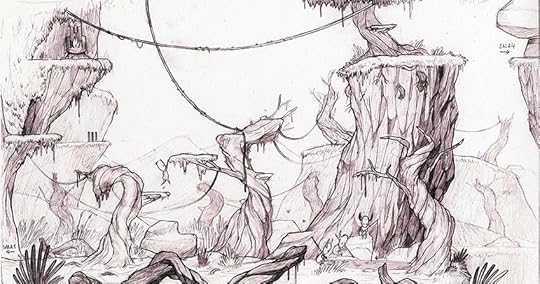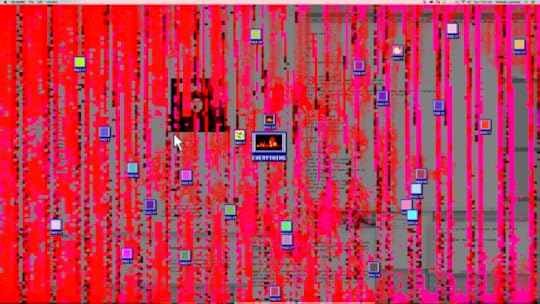Kill Screen Magazine's Blog, page 28
November 16, 2016
A videogame with a little girl you can actually care about
Videogames have a history of being terrible at depicting young girls. The problem is usually that the designers want you to care about them, to want to safeguard them, but try to engineer that in the most obnoxious way. Either they’re being used as zombie bait like Sherry in Resident Evil 2 (1998), or their insistent squeals are beyond annoying—see Katey in Dead Rising 2 (2010).
One game that gets it right is the newly-released adventure game Silence. At its center is a sibling relationship that’s delicately handled, and it even manages to pull off a heartbreaking payoff at the game’s end (depending on your final decision). Wondering what the difference was with this game when compared to others that depict little girls, I spoke to Marco Hüllen, the creative director of Silence, and quickly located what is likely the source.
she is able to comfort her brother when he is faced with his fears
“The idea for the game was conceived right after I became a dad,” Hüllen said. “Like every father, I would do everything for my child, and I was wondering how far I would be willing to take that and how these kind of hard choices would change me as a human being. In the game, it is Noah who is faced with this situation. He has to make a decision that will bring great sorrow to others, but will save his beloved little sister Renie. That decision will change him, and it will change how his sister sees him. Ultimately, he will become a different person.”
Hüllen only touches on what makes the relationship between Noah and his little sister Renie special. In fact, he’s only really talking about the ending, which only works because you genuinely care for Renie by that point. This is achieved by how the siblings are both there for each other when it’s most needed. It’s not a one-way relationship as it would be in other games; Noah no doubt being the heroic big brother constantly getting his sister out of trouble, with her constantly crying with wide eyes into the camera.
It starts off that way, mind you, with the pair of orphans victim to an air raid on their city, separated from their friends, and stuck inside their makeshift living space. Your first task is to help Noah comfort Renie, to stop her crying, which he manages by putting on a puppet show and feeding her imagination. But after that the game flips the tables as the two of them enter the land of Silence—a fantastic place that exists between life and death.
The difference in this dreamworld is that Renie is unable to be seen or heard by the monsters of Silence, and so it is the young girl who must help everyone out of any sticky situation they might get themselves into. In my experience at least, it’s easier to care for someone who doesn’t rely entirely upon you, someone who is a friend rather than a chore to deal with. It also helps that each character thanks Renie for her help, being surprised by and admiring her bravery, and usually playing with her or hugging her afterwards as a gesture of their growing relationship.
But it’s not just a case of empowering Renie as a little girl; that’s only a part of what makes her successful as a character. The way she is able to comfort her brother when he is faced with his fears is another big factor. Renie plays the two-way tennis game that comprises any relationship, the give and take, whereas the more annoying videogame girls before her only took; in fact, they begged, sobbed, and screamed. When Noah finds himself on the edge of a drop, facing his fear of heights and an imminent panic attack, Renie moves in to help him through it. And so when you play as Noah and perceive that Renie is in trouble you rush to her in order to return the favor.
Another aspect of the game that works in Renie’s favor is that, while it is cute at times, there’s an underlying brutality to the game’s world. This might be best demonstrated when the game has you perform CPR on one of the characters. A more lighthearted game would make a joke out of it, perhaps having the unconscious character wake when Noah is about to perform mouth-to-mouth resuscitation. But that levity never comes and it leads to a moment of panic—the game actually wants you to perform CPR to save this character’s life, there’s no messing around.
“it was very important to us to just hint at violence”
Talking on the game’s brutality, Hüllen said “it was very important to us to just hint at violence. The idea, or rather the threat of it is necessary to set up the story and the situation of the characters, but it isn’t what the game is about. Sometimes a horrified expression on the face of one of the beloved characters is worse than the horror itself, because it allows players to experience it through the characters and to empathize with their fear. We hope that it will invite them to feel protective about them, and to bring out the best in themselves.”
Hüllen and his team used a technique called “projection mapping” to project hand-painted images onto 3D models to create the characters. This allowed them to give the characters a lot more facial expression than the techniques they’ve applied to games in the past, such as The Whispered World (2009), the game that Silence is a sequel to. It’s made a big difference and to the power of the storytelling and has enabled the team to really focus on that aspect of the game rather than the fussy puzzles of traditional adventure games.
“Back in time we could discuss puzzles with our friends for weeks on end and had a lot of time to solve them,” Hüllen said. “With the internet, the solution to every puzzle is only a mouse click away, and the availability of walkthroughs is spoiling what used to be fun about adventure games. But we wanted to preserve that fun. Thus, we put the focus of the game on the flow of the story and the way to experience it. There are still puzzles to solve, and some of them are challenging, but they will not disrupt the story and the player’s immersion into it.”
Having played Silence and being the kind of person who regularly gets frustrated by the item-juggling puzzles of adventure games, I can confidently say that what Hüllen said here is backed up in the final game. It might be the only adventure game that didn’t piss me off at one point with an obtuse or daft puzzle. That may not be to the liking of adventure game fans who have come to accept and got used to those kinds of puzzles, but for anyone who is plays the genre for its story, it’s a big relief.
You can find out more about Silence on its website. You can purchase Silence for Windows and Mac on Steam, GOG, and the Humble Store.
The post A videogame with a little girl you can actually care about appeared first on Kill Screen.
The making of Candle, a watercolor adventure game
Four years ago, Spanish duo Jose A. Gutiérrez and Miguel Vallés were still at university but had dreams of creating their own videogame. They were naive back then: Gutiérrez had spent years drawing and doing a Fine Art degree but had never done animation before, while Vallés was studying Software Engineering but had never worked on a videogame until then. And what they were trying to achieve is something that Gutiérrez now describes as “absolute madness.”
They had €3000 that they had won for coming first prize at a small entrepreneurs competition hosted by the University of Zaragoza. What they had entered was a comic, originally made by Gutiérrez for an illustration workshop, that outlines the world and characters of Candle—which would become the videogame they worked on for the next four years. It didn’t take long before they “realized why no one had ever made a game fully painted with watercolors and no digital tools.”
That first year was spent with both of them simply learning the processes that they needed to know by heart to make Candle. Any progress was often trashed and begun again as they developed these skills rapidly. But eventually the hard work paid off as the pair had managed to put together something that looked special. “It didn’t look like an animated painting; it WAS an animated painting,” Gutiérrez recalled. The game’s look was enough to land them an office in a business incubator, a bigger team, and funding from another entrepreneurs competition as well as Kickstarter.
you can easily lose the quality of the original paintings
The workflow that they had to establish to get Candle to that point includes finding the right way to paint with watercolors, convert them to digital files, and then import them to the Unity engine so they can be pieced together with code. To fully explain and demonstrate it, Gutiérrez and Vallés put together a making-of video that you can watch below.
What isn’t covered in that video is that one of the main difficulties with creating a game entirely with watercolors is that you can easily lose the quality of the original paintings when scanning them into a computer. The tool that saved Gutiérrez’s and the other artists’ work during the transfer was 2DToolkit, made by Dinesh Kumar, with whom the team worked with to develop further to meet the demands of Candle. “2DToolkit offered us a full workspace to develop all the 2D content for Candle: build all the assets, handle the sprites atlases, create and preview the animations, along with a lot of optimization options to manage the textures’ size,” wrote Gutiérrez.
From there, it was just a case of putting in the hours to finish Candle. And now the team has done that: Candle was released for Windows, Mac, and Linux yesterday. It’s a game that has you control a masked kid called Teku who has to save the Shaman of his tribe with his intuition and the help of the tiny candle on the end of one of his arms. It’s a surprisingly tough little game given how friendly it looks. You’ll need to make sure you examine all parts of the environment in order to survive—a design choice that takes full advantage of the hand-made nature of the game, every detail given due care and attention.
You can find out more about Candle on its website. It’s available to purchase on Steam, GOG, and the Humble Store.
The post The making of Candle, a watercolor adventure game appeared first on Kill Screen.
November 15, 2016
The team that made Botanicula teases its next game
Amanita Design has teased its next game after this year’s brilliant adventure, Samorost 3. It’s called Chuchel and is being created by the team that made bucolic tree-friends adventure Botanicula (2012), including director Jaromír Plachý and the Czech band Dva, who have provided the music. It’s due out in the second half of 2017.
The teaser trailer for Chuchel is in black and white and shows a blobby creature with stubby legs and a tail quivering with fear under a spotlight. The reason for that would appear to be a large, menacing hand that is likely coming to pick it up and do god knows what with it.
Amanita Design founder and creative lead Jakub Dvorský has said that there are more teasers for Chuchel coming very soon (in a few hours). For now, you can watch the one below. UPDATE: The second teaser is now ready to watch—you’ll find it below.
Dvorský told me earlier this year that Amanita Design has currently split into four teams, with each one working on its own project, which explains how they’re able to tease this next game as “coming soon” not long after the release of Samorost 3. That also means you can probably expect more projects to surface from Amanita Design in the future and hopefully won’t have to endure the four year wait between Botanicula and Samorost 3 again.
Chuchel has actually been known about for a couple of years now as an unannounced puzzle game. It was presented with a first look at Anifilm Gameday in the Czech Republic earlier this year and you can see a glimpse of how it plays in this video from the event. But do bear in mind that this is an unfinished version and isn’t representative of the final game.
Look out for more updates on Chuchel over on its website.
The post The team that made Botanicula teases its next game appeared first on Kill Screen.
Artists pay tribute to NES games with a collection of GIFs
Videogame GIFs are one of my favorite things on the internet. Retro game nostalgia less so, but that hasn’t stopped me enjoying the NES game-inspired GIFs that are being showcased on Back to Bits.
The website launched today and is a curated animation project created by Washington-based artist Jerry Liu. His reason for putting Back to Bits together is simple: he wanted a way to bring likeminded artists together and to celebrate the games of his and their childhood.
a range of different art styles and approaches
The GIFs that you can see today were created by more than 40 different artists from around the world and pay tribute to games like The Legend of Zelda (1986), Tetris (1984), Mega Man (1987), Balloon Flight (1984), and Joust (1982).
The wonderful thing about them is that you get to see a range of different art styles and approaches to remembering these games. Some are short and use simple shapes while others are more sketchy in style. Some aim to emulate the gameplay directly while others take the tribute in a different direction and become parody. For the record, this Paperboy (1980) GIF is probably my favorite.
This “NES Nostalgia” set of GIFs is only the start of Back to Bits. There will be more curated collections, or “Levels” as they’re being called, coming in the future.
You can see some of the GIFs from the Back to Bits selection below, as well as a montage of them in the video right at the bottom, or you can head over to the Back to Bits website to seem them all.
All GIFs belong to Back to Bits
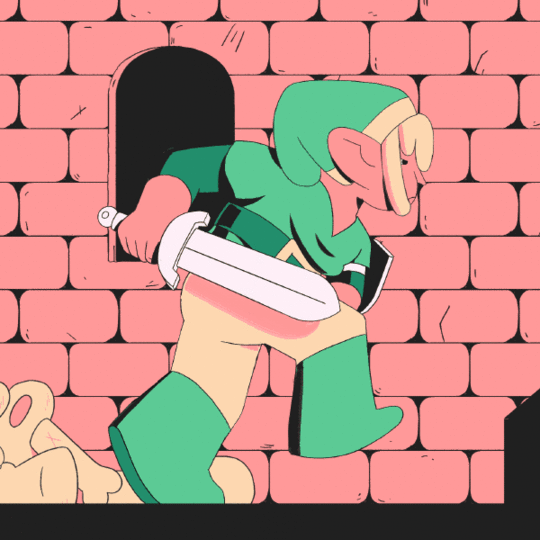
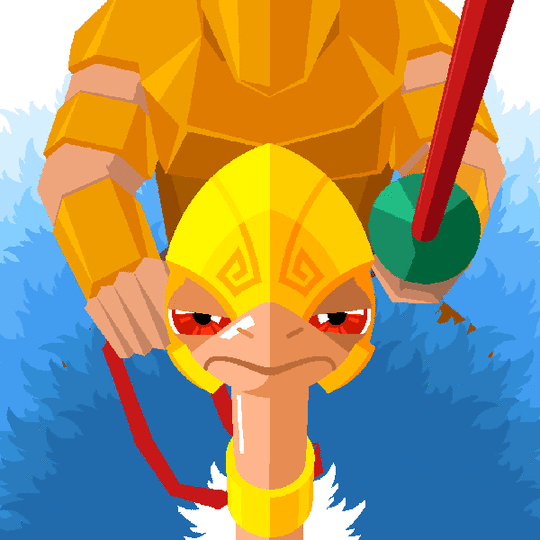
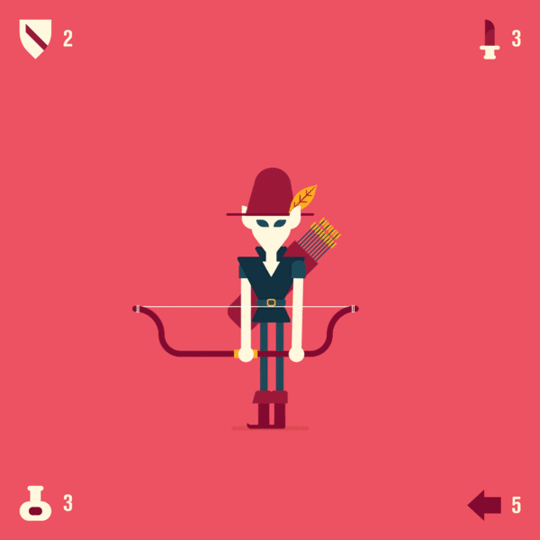
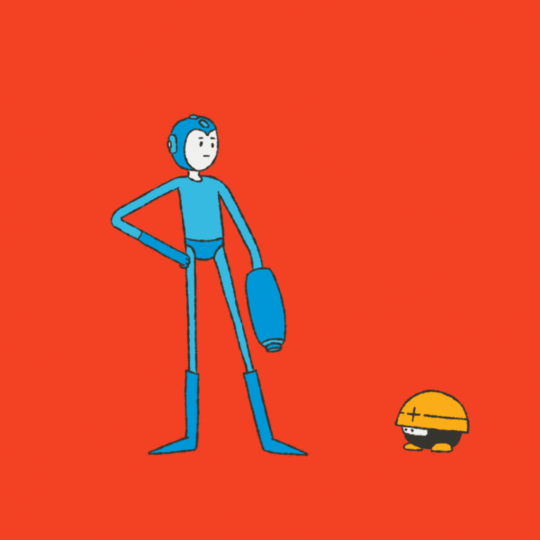
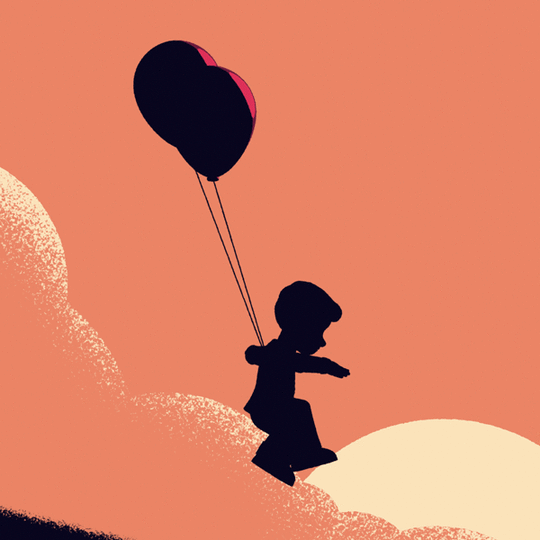
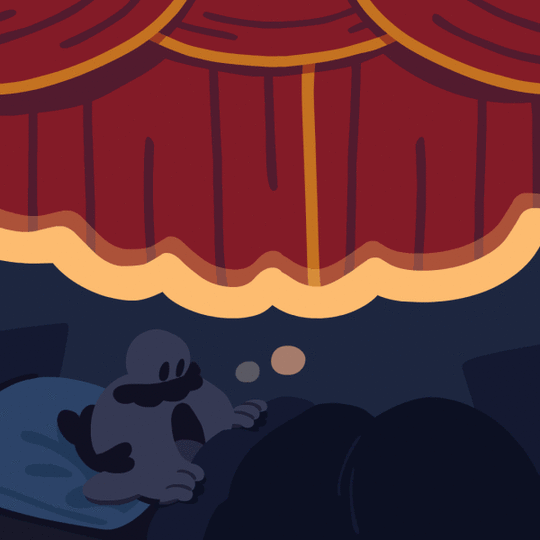
The post Artists pay tribute to NES games with a collection of GIFs appeared first on Kill Screen.
Circles is a masterclass in minimalist game design
Anyone should be able to play Circles regardless of age, language, and their experience with videogames. It’s a game that has mastered the art of communicating abstract ideas to players in as minimal a way as possible. A designer’s wet dream, no doubt.
At the heart of its success is tying everything in the game to the movement of your mouse. Circles grow larger, shrink, rotate in unison, or otherwise move around the screen according to how you move the cursor. Some may react to how fast you move the cursor, others to which direction it’s moving in, while others care only about continuous movement. It’s surprising how intuitive it manages to be as, within the first few minutes of playing it, you pick up a number of different rules.

Your task, then, is to figure out how to move your cursor so that it doesn’t collide with any of the circles. It’s simple at first but, as you can imagine, becomes quite complex when levels have multiple circles that all require different types of mouse movement to bypass. But even then it’ll likely only take you a matter of seconds to overcome the challenge. This is helped along by the fact that the game handles failure very well—you lose the circle you were transporting across the screen and can instantly pick it back up to retry.
the game handles failure very well
Once you’ve pulled off the feat, you can collect the small circle in each level to finish it, at which point you suck up all the other circles to a satisfying chime. You can see this in action in the GIF below (just, er, imagine the glorious sounds).

Jeroen Wimmers has been working on Circles for the past three years and it seems to have paid off. He started working on it back in 2013 while needing something simpler to design when making Westerado: Double Barreled (2015). At first, he couldn’t get the game to work without using text—it didn’t make sense to players without obvious prompts. However, Wimmers then started work as an intern at a casual games company and, despite not liking the experience too much, learned some valuable lessons about making games more accessible.
With that knowledge he made some drastic changes to Circles and has refined it to the state it is in now. That said, it’s still in beta and while it can be purchased and played right now it won’t be finished until early 2017.
You can purchase Circles on Steam and itch.io. The final version will be out in early 2017. Find out more on its website.
The post Circles is a masterclass in minimalist game design appeared first on Kill Screen.
Smart tracking technology aims to build a road block for human trafficking
This article is part of a collaboration with iQ by Intel .
When their aunt was abducted and traded into a pipeline of human trafficking while crossing the Mexico-US border, sisters America and Penelope Lopez turned to Internet of Things (IoT) technology to find a way to help other women. Human trafficking is a humanitarian crisis that affects nearly 21 million adults and children worldwide, according to recent statistics from the International Labor Organization (ILO). These victims are usually coerced into forced labor or become victims of sexual exploitation. They work for non-existent or slave wages and feel trapped, with seemingly no way out.
America Lopez’s aunt managed to escape her captors by crawling through a bathroom window. “She saw stickers in the bathroom stalls that said ‘call this number for help,’” said America. “But what are the chances of that when you’re guarded so closely?” To help give threatened women a way out, America and Penelope, “The CyberCode Twins,” are developing Beacon of Hope. The device turns a simple tampon or pad into a distress signal.
Beacon of Hope pairs the small size and flexible power of Intel Curie with Bluetooth-enabled trackers that, once activated, can give authorities real-time updates on victims’ whereabouts. The trackers are embedded into tampons and pads, which would be available from dispensers at highway rest stops, gas stations and casinos. At the press of a button, a woman in trouble could get a tracker tampon and carry it in her purse or pocket.
The twins are part of the Intel Software Innovators Program, which helps independent makers bring their ideas to fruition. Their tampon-tracker idea sparked during an Intel-sponsored AT&T Hackathon, and the prototype earned the twins a top-15 finish at IBM’s Global Mobile Innovator Tournament earlier this year. While their prototype is being demoed in tampons or pads, America said trackers could be hidden in any small item, such as a hair tie or a patch. “We really believe in creating solutions,” she said, explaining that she sees this device as one step in the right direction.
At the press of a button, a woman in trouble could get a tracker tampon
“Smart cities should care about the safety of those that are considered vulnerable,” America said. “But the technology to increase women’s safety just isn’t there; it isn’t a priority.” Beacon of Hope is part of a larger movement to show how tech can be used more broadly to combat social problems, including kidnapping and human trafficking. DYI tech platforms like Hackster.io aim to make tech more accessible, and events like Hackster Live enable encourage hackers to address the issues they face every day using IoT tech.
While IoT modules like Edison and Curie include small-area wireless capabilities, there are some tiny compute boards that come with built-in GSM, according to Adam Benzion, co-founder of Hackster.io. This allows devices to connect to wireless networks and send data from almost anywhere there’s a signal. “You can now take technologies that are completely open source and have amazing coverage,” Benzion explained.
WEAR, a low-cost wearable created by a high-school student through Hackster.io, uses Arduino technology on a woman’s wearable device that sends friends and family security alerts at the press of a button. Currently, two out of three assaults in the U.S. go unreported. A new site, Survivors.io provides a map and reporting system for victims of sexual assault worldwide. It lets victims anonymously input when, where and by whom they were assaulted. The site was created by a graduate of AnnieCannons, a non-profit that trains survivors of human trafficking in code so they can secure stable, livable income.
AnnieCannons CEO and cofounder Jessica Hubley said Survivors.io is meant to break down the barriers that prevent sexual assault survivors from going to the police. America added that this kind of technology can also be used for Amber Alerts, refugee centers or domestic violence shelters. “This is a space that needs a lot more innovation,” she said.
The post Smart tracking technology aims to build a road block for human trafficking appeared first on Kill Screen.
You probably need this interactive zine about being hopelessly optimistic
Game maker and web artist Nathalie Lawhead announced that she’s making an interactive zine earlier this week, under the working title “Everything is going to be OK.” It’s about being hopelessly optimistic while everything is breaking around you.
“It’s a cathartic dump of my past experiences mostly about feeling hopeless or ostracized for being a woman and doing the tech thing,” Lawhead told me. This is a topic she has written about before. “To me, the election results drove the point across that this situation will not improve.” What she fears most is the “sexist backlash” that having Donald Trump as president might induce.
“I mean, there are so many women that are looking at this right now and it just reminds them of what they had to go through,” Lawhead said. “This means a lot of things to a lot of different people, but I’m not looking forward to other sexist molesting bigots feeling empowered by this.”
Despite her fears and emotional exhaustion, Lawhead is diving into her creative projects as a way to not just cope with it all, but to keep fighting. “Art has always been a force of change, the tool of dissidents, and that subliminal subversion that slowly wakes people up,” she said. “If games are art, and we sincerely believe that, then now is our time to act like it.”
There’s more to “Everything is going to be OK” than its message of optimism against the odds—which can be seen in the zine’s blobby creature who suffers in various ways but always remains cheery. The pages of the zine are scattered across a computer desktop as if part of some corrupt entity that has taken over. A big part of the experience is working out how you interact and play with the zine’s 43 pages. It’s deliberately made obtuse and isn’t necessarily something you can win. That’s one of the reasons that Lawhead is avoiding calling this new project a videogame.
She told me that games are almost always about the player maintaining a level of control. Players learn rules and loops and are punished or rewarded according to their actions. But Lawhead doesn’t want to provide that safety for players any longer. “I want things that rebel and frustrate you and function on their own. I want you to feel betrayed,” she said. “You have to take the time to get to know it. Surrender your expectations, and let it make its own rules … You know, something where there is no more control …”
“I want you to feel betrayed”
This lack of control is also communicated through the visuals and audio throughout “Everything is going to be OK,” as images and video are compressed and corrupted. The idea is to create a sense of uneasiness, as if everything is on the edge of breaking … perhaps like the current situation in America. To achieve the degraded look, Lawhead uses tools like Glitch Cruiser and 3 Bit Dither (and many others). “Basically, you loop through the image data … or BitmapData … and then redraw it after you’ve messed it up. Then batch process or save. That’s one approach. It’s been the easiest for me,” she explained.
The final look has become somewhat of a signature of Lawhead’s work, the uncomfortable pixels and shredded images appearing in Monkey Fortunetell, FROGGY, and ARMAGAD. It’s something that Lawhead returns to due to her approach to digital art. “I find it funny that most image editing and art tools on a computer always try to mimic something in real life (realistic brush strokes, pencil, etc). Why fight with a computer to replicate reality?” Lawhead said. “Why not try to explore something totally unique to computers? Pixels, distortion, and tortured compression is a hallmark of digital art, so it’s interesting to see how you can make that work in a reasonable way.”

Lawhead’s move away from videogames and towards an interactive zine with this latest project is indicative of her current feelings of the tech space. She said that “Everything is going to be OK” might be the last game-like thing she makes due to financial reasons and depression, but remains hopeful that it isn’t. She recalled the times when she has been told by men who work in tech that she isn’t smart enough, or doesn’t take on the “hard problems,” which lead to her questioning her own self-worth, even if she is able to overcome it.
“This whole constant barrage is a joke. I feel like I have to keep seeing through this, and maintain that realistic point of view. Yes, it is hard, but I’m not making games, or working in tech, for approval. I don’t need permission to do this. I do this because I love it,” Lawhead said. “The fact that I have to put up with crap means I’m doing it right. If I didn’t put up with crap then that means I’m probably an entitled asshole too and I need to rethink my world view.”
You can find out more about Everything is going to be OK on its announcement page. Check out Nathalie Lawhead’s other projects on her website.

The post You probably need this interactive zine about being hopelessly optimistic appeared first on Kill Screen.
Being banned in Iran isn’t stopping 1979 Revolution reaching Iranians
1979 Revolution is a game about the Iranian Revolution of 1978-79. It came out back in April this year and, two weeks later, the Iranian government announced its plans to ban it. Specifically, Iran’s National Foundation for Computer Games (NFCG) planned to ban any website or individuals selling the game, to block 1979 Revolution‘s homepage, and over 30 more websites that even mention it.
“Games like this can poison the minds of the youth and young adults about their country by means of false and distorted information, and also damage their spirits,” said the NFCG to the Tehran Times.
The Iranian government plans to battle 1979 Revolution further, announcing this past summer that it would be commissioning its own version of the game in order to set the record straight and communicate the “truth” of the events.
“both tremendously moved and empowered by seeing their own history and culture represented”
iNK Stories, the creator of 1979 Revolution, hasn’t been deterred by the Iranian government’s actions. In fact, tomorrow, on November 16th, the team is releasing the game in six new languages: German, French, Spanish, Russian, Turkish, and most importantly of all, Farsi—the majority language of Iran. Considering the game’s ban in Iran, making a Farsi version available might seem pointless, but not only is it also spoken in Afghanistan, Uzbekistan, and Tajikistan, the ban in Iran doesn’t seem to have stopped Iranians playing the game.
“We’ve heard ways Iranians have been able to get around these blocks,” Andres Perez-Duarte, producer at iNK Stories told me, “using proxies and switching IP addresses to access through other countries.” This might explain why, after the ban in Iran, Ink Stories saw a spike in sales from Singapore and other parts of Asia: “can’t confirm if this is the reason but several Iranians have confirmed they commonly use Singapore’s IP addresses to access banned content remotely,” Perez-Duarte said.
Even before the ban, iNK Stories had made it a priority after the game’s initial release to make 1979 Revolution available in Farsi, so that the people its subject is closest to can experience it in their native tongue. “We’ve received overwhelming interest and support from outspoken Farsi speaking audiences who are both tremendously moved and empowered by seeing their own history and culture represented—and wish to share it with older generations who don’t speak English—giving them an opportunity to experience a somewhat taboo moment in time to explore from a perspective other than the government sanctioned,” Perez-Duarte told me.
Since its release, 1979 Revolution has caught more positive attention too, not just from critics and players, but also the UNESCO MGIEP-commissioned Paul Darvasi of York University in Toronto. Later this month, he will be presenting the game to the United Nations in view of its work towards peace education and conflict resolution, with a paper titled “Empathy, Perspective and Complicity: How Digital Games can Support Peace Education and Conflict Resolution.”
You can find out more about 1979 Revolution on its website. The game is currently available for Windows, Mac, and iOS.
The post Being banned in Iran isn’t stopping 1979 Revolution reaching Iranians appeared first on Kill Screen.
How AI is shaping the future of interactive games
This article is part of a collaboration with iQ by Intel .
In the 2013 film Her, protagonist Theodore plays a videogame where he is surprised by a wild, swearing artificially intelligent cartoon character. The foul-mouthed little alien launches into a conversation with Theodore, remaining stubbornly unhelpful. Realizing it must be a test, Theodore curses back in a verbal brawl that ends with the alien showing him the way forward.
Her is science fiction, but that human-like interactive game featured in the movie may be closer to becoming real. Created by game designer David OReilly, the Alien Child game offers a glimpse into how artificial intelligence (AI) and machine learning could make games of the future more engaging and interactive than ever before.
“The most fascinating use of machine learning is where the AI learns about us, as well as learning about itself and the characters we write,” said Guy Gadney, director of The Suspect (2014), an interactive AI thriller. The Suspect used machine learning to put players in conversation with the fictional criminal mastermind Markus Winter. To save some of his hostages, players must use interrogation tactics to try and outwit him.
Similar to interacting with a chatbot, the experience makes players type responses to Winter, then the AI responds on-the-fly. Aiming to approximate the kind of wily, organic conversation seen in Her, Gadney’s use of machine learning technology adds an organic intensity and suspense. “We wanted to create surprise, which only happens when a machine steps out of common sense and presents a situation no one is expecting,” he said. “As humans, we communicate. It’s what makes something really believable.”
Traditional software is a set of strict rules that a machine follows to the letter. Usually, a computer just executes that chain of command, but machine learning allows the computer to discover the rules with time and experimentation. “Machine learning is defined as a class of programs where performance improves with time,” explained Pradeep Dubey, an Intel Fellow and Director of Parallel Computing Lab. “As the program crunches more data, it gets better and better.”
Machine learning and AI technologies open a world of creative possibilities
George Dolbier, IBM North America CTO of Interactive Media, describes machine learning as “a way of writing software with data rather than code.” “Software makes choices, perform actions based on statistics and change behavior based on new data,” he said. Because they are nimble, machine learning and AI technologies open a world of creative possibilities, according to Dolbier. It can be applied “to almost all aspects of the play experience in the future, whether deciding how to adjust difficulty and rewards for specific players, analyzing massive amounts of player data or creating entirely fictional personalities we can interact with,” he said.
Back in May, for example, YouTuber SethBling wrote a program called MarI/O that taught itself to play Super Mario World (1990). Unlike other AI, it started out with no prior directives but, like human players, learned to navigate the level through trial and error. MarI/O wasn’t necessarily “thinking” about how to beat the game. After each death, it repeated successes and randomly tried new things to replace failures. While approximating human faculties, MarI/O’s machine-like mentality became apparent through its hyper focus on reaching the end goal, ignoring the temptation of power-ups and coins along the way — something a human player likely wouldn’t do.
Machine learning may not be ready to fully replicate human behavior, but Gadney believes it can bring a more human element to the way people interact with technology. “As we grow up, we learn through experience and emotions,” he explained. “And if we can use machine learning to recreate that and put it into an interactive experience, then I think we’re on to something.” Machine learning carries The Suspect’s unique experience, but that doesn’t mean the game is writing itself or that the story is random. It was used in combination with other, more traditional forms of game design.
Gandey said the best way to think about machine learning in game design right now is as another tool, like a paintbrush. It’s a tool that’s far from perfect. In March, Microsoft’s Twitter bot Tay was supposed to learn how to have a casual conversation with everyone who interacted with her. But after 24 hours of coordinated trolling, she ended up spewing hate speech and was shut down. This emphasized the need to balance freedom and pointed rulesets — like accounting for trolls in an online forum.
One day, machine learning may look as seamless and personal as the artificial intelligence envisioned in Her. Games are far from that right now, but a whole new world appears to open up when players are able to have conversations and build more organic relationships with AI, according to Alien Child creator David OReilly. Machines are giving human intelligence a run for the money, according to Dubey. “It’s not just a theory anymore,” he said. “In practice, machines have actually delivered better accuracy than sometimes the best human.”
The post How AI is shaping the future of interactive games appeared first on Kill Screen.
November 14, 2016
Find bliss in the noisy glitch-visuals of RŌA
RŌA is best seen rather than described. But, as I have to use words, I’ll say that my first impressions of it were that it looks like someone turned datamoshing into a videogame (if you don’t know what datamoshing is, there’s a whole site dedicated to it).
Colors belch into each other across the screen, glitching, frazzled, swirling like electronic liquid. Among these colors you can sometimes make out figures, stood in a group, all of them frozen in their animation. These figures seem to affect the shades and tones of the pixels of color around them, while they themselves are corrupted by the psychedelic hues lapping at their outlines like a corrosive ocean.
“The player has to move playfully”
The creators of RŌA, collectively known as Arquoia, don’t talk much about how it looks, but rather what they want the game to achieve. In the description, it’s explained that the game is about creating a still life. You move around in 3D space, changing your angle and position around the figures, letting the colors wash around them until you find a satisfying composition. “Whilst in many games the beings are eliminated by clicks, in RŌA you put them at rest or awake them again,” says Arquoia.
There are no time limits or any other restrictions placed on you in RŌA, which may make it more of an art tool than a game. However, there are apparently two endings to reach, despite Arquoia stating that “the journey is the destination here.” How you might reach those endings seems to be hinted at in these lines: “The player has to move playfully to create appealing and mesmerizing pictures and moods. One has to attentively hunt or catch the moment to see something splendid appear.”
RŌA asks something unusual of players, then; to experiment like an artist with angle and color. It’s a game that is beholden to your capacity to let your imagination unfold on a canvas. It’s a game that, as Arquoia states, for people who are “open to the uncommon, in wonder watching the stars and chaos,” and who “maybe [go] to museums sometimes.” If you’re open to interactive experiences that encourage you to enter a dreamlike state and to play with visuals then it’s worth checking out. It’s a game about finding the bliss in noise.
You can purchase RŌA on itch.io and Game Jolt. It has been Greenlit and will be coming to Steam.
The post Find bliss in the noisy glitch-visuals of RŌA appeared first on Kill Screen.
Kill Screen Magazine's Blog
- Kill Screen Magazine's profile
- 4 followers




